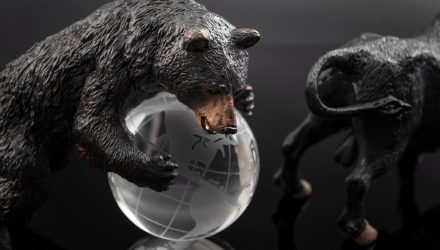The headwinds continue to blow for emerging markets amid a rising dollar and now a more hawkish Federal Reserve after its latest comments on more rate hikes to come. As such, the Direxion Daily MSCI Emerging Markets Bear 3X ETF (EDZ) is up almost 50% for the year.
The performances of emerging markets assets are tied to the strength of their currencies. As a monetary policy-tightening Fed continues its hawkish stance, it could put pressure on EM currencies, especially those in a fragile state.
“Severe currency devaluations are common in emerging markets. We wanted to better understand these crashes: how fast they happen, how this relates to equity returns, and the nature of the recoveries,” noted Igor Vasilachi with Martina Roman in a blog post by global asset management firm Verdad.
“We studied the evolution of exchange rates and equity market returns before and after currency crashes since the mid-1990s, when EM equity return series first became widely available,” the blog noted further. “We defined a currency crash as a 20%+ depreciation against the USD over a three-month period. We excluded markets with pegged currencies, such as Saudi Arabia, or common currencies, such as Greece, as their currencies do not reflect their underlying economy. In the remaining pool of countries, we found 16 instances of currency crashes across eight emerging markets. Of these, 12 happened during global crises, and 4 were idiosyncratic events. Below we show the average exchange rate curves before and after currency crashes (T=0).”

Figure 1: Average Exchange Rate Curve (T-12M to T+12M). Source: Refinitiv
Leveraging Weakness in EM Assets
As more pressure is applied to EM assets, as mentioned, one way to play the bearishness is via inverse ETFs for tactical exposure. To further amplify gains, traders can access thrice the leverage of a normal fund using EDZ.
EDZ seeks daily investment results of 300% of the inverse of the daily performance of the MSCI Emerging Markets IndexSM. The fund invests in swap agreements, futures contracts, short positions, or other financial instruments that, in combination, provide inverse or short leveraged exposure to the index equal to at least 80% of the fund’s net assets.
For more news, information, and strategy, visit the Leveraged & Inverse Channel.








